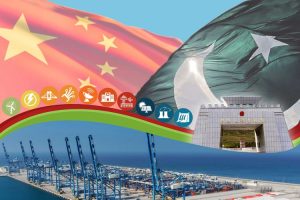Ever since Chinese President Xi Jinping announced the Belt and Road Initiative (BRI) a few years ago, Beijing’s role in global development finance has driven both admiration and paranoia around the world. Now, a new report by AidData has finally attached numbers to the phenomenon – and it’s likely to drive further global debate.
Using data on over 13,000 Chinese-financed projects, committed between 2000 and 2017 in 165 countries, AidData explains how China has redefined the idea of development aid around the world.
According to the Organization for Economic Co-operation and Development (OECD), development projects are classified as Official Development Assistance (ODA) if they are concessional in nature. This includes grants, technical assistance, and concessional loans. Non-concessional loans and export credits, which add a heavier financial burden on the recipient country, are classified as Other Official Flows (OOFs).
AidData finds that, while ODA grants dominate the development finance outflow of all G7 financiers, China relies heavily on OOF loans and credits. Between 2000 and 2017, the U.S. provided as much as 73 percent of its global development finance through ODA, while China provided only 12 percent of its finance in that manner. Strikingly, since the inception of BRI in 2013, China has channeled an even bigger proportion of its development finance through the less concessional OOF methods.
But the scale of China’s generosity has not been uniform across the world. The dataset reveals that China has been using its money strategically, especially in geopolitically significant parts of the world.
Take South Asia, for instance. For years, China has been trying to break India’s hegemony in the region, and since the turn of the millennium, it has tried to do this by pouring over $80 billion into the region – almost a tenth of the total spending captured in the AidData dataset. Yet, more notably, almost a quarter of this has been in the form of ODA – as much as twice the global average for Chinese development finance.
Nepal, lodged between India and China and subjected to a tug-of-war between the two in recent years, has found Beijing to be particularly generous. Between 2000 and 2017, over half of the development finance that Nepal received from China arrived as ODA – the highest in South Asia for that period. Since the introduction of BRI in 2013, all of Nepal’s Chinese projects have been financed by ODA, against China’s global trend of reducing the proportion of ODA outflows since that year. Beijing’s benevolence in Nepal is only matched by its charity toward Sri Lanka, particularly after the introduction of BRI, with well over half its projects being financed by ODA since 2013.
Meanwhile, China has also managed to establish a strong hold over the financial health of the two strategically important Indian Ocean countries: Sri Lanka and the Maldives. While Sri Lanka owes over 10 percent of its GDP as debt towards to China, in the Maldives, that number is a whopping 40 percent.
More importantly, according to the report, some of this debt could force governments into sudden distress by blurring the line between public and private debt. There can often be ambiguity over who is ultimately responsible for repayment. In 2017, for instance, China Eximbank issued a $127.5 million loan to a private company in the Maldives called Ahmed Siyam Holdings Pvt Ltd to develop a luxury resort. The owner of that firm was a key ally of the then-president Abdulla Yameen, who issued a sovereign guarantee in support of the loan. That meant that the private debt would automatically turn into public debt if the project failed.
Following global lockdowns during COVID-19, the project inevitably ran into trouble, and Ahmed Siyam Holdings failed to meet a $10 million repayment obligation in July 2020. A day after the default, China Eximbank warned the Maldivian government that, as the ultimate guarantor of the loan, it was responsible for its repayment. Failure to meet that obligation, the creditor warned, would jeopardize the country’s international credit ratings and macroeconomic stability. The matter was only resolved after the Maldivian government threatened to exercise its mortgage rights if Ahmed Siyam Holdings did not deposit the overdue payment within five business days.
The unprecedented scale of China’s development finance – and its more transactional practice of it – will have significant consequences for both its geopolitical rivals as well as recipient countries in the years to come. In recent years, China’s incredible expansion of credit has dwarfed the role of the West. Between 2013 and 2017, China doled out more than twice as much overseas development finance as the U.S., according to AidData. China has remade the idea of development aid – and countries ought to pay heed.

































